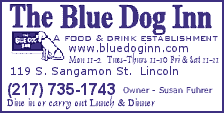|
To try out the online market in this overheated atmosphere, I bought an iPhone and listed it on eBay.
This wannabe profiteer lost money.
It turns out lessons for investing in stock and real estate apply to flipping iPhones: Learn as much as you can about market conditions, trust your instinct, understand how the process works and take into account all the transaction costs.
Neither Apple Inc. nor carrier AT&T Inc. were much help in figuring how many iPhones would be available at launch last month, but all indications
-- pointed to a shortage. Lines formed days before they went on sale and advanced reviews were raving.

Though I initially wanted one for myself, I passed after studying the specs of the hybrid cell phone, media player and wireless Internet browser. It was too pricey at $499 and $599, and its limited memory wasn't enough for my music. And since I have a decent cell phone plan on another carrier, I wasn't itching to switch to AT&T and its pokey data network.
Then I found myself surfing eBay the day after the iPhone was released, and noticed some were going for well above the retail price. If I could get hold of one, reselling it didn't seem like a big risk because I could return it within two weeks for a full refund if it was still wrapped and unused.
With my laptop still open in front of me, I called the Apple store on Manhattan's posh Fifth Avenue, where just days earlier a crowd of ardent Apple fans camped out just to make sure they were the first to get their mitts on the gadget.
"Hey, do you have any more iPhones?" I asked a saleswoman, expecting a sigh and negative answer.

Surprisingly, she said the phones were still in stock. Without spending much more time thinking about it, I headed to the store expecting a circus.
When I arrived, there was no mob or even a line. Though a swarm of customers surrounded an iPhone display, the scene was surprisingly calm.
I walked up to a salesperson, asked whom I needed to speak with to purchase an iPhone, and was pointed toward an almost-empty checkout area. All I had to do was walk up to a cashier, ask for an 8 gigabyte iPhone, hand over my credit card and sign the receipt.
Within minutes, I was out the door, toting my weightier-than-expected booty in a matching iPhone shopping bag.
Once home, I wasted no time listing it on eBay under the heading "Brand new, unopened 8 GB iPhone!" with a starting price of $100. In addition to general information about the product, I emphasized it was "just purchased on June 30 from the 5th Avenue Apple store in New York City" and "comes with the black promotional iPhone bag Apple packed it in when I purchased it."
I wished potential buyers good luck, and waited for the bids to roll in.
[to top of second column]
 |
 I waited. And waited. By July 3, four days after launch, I had tallied a few product views but no bids. My friends, family and colleagues started to tease me, and I noticed that plenty of others thought they'd be able to make a quick buck by reselling their iPhones on eBay, too.
I had misjudged both demand and the supply. And though Apple and AT&T stores eventually sold out, people weren't excited enough to open their wallets too wide.
That night, the first bid rolled in at $101. And it was from a friend.

The next day, bidding rose to $150, and I started to relax a little. That is, until fellow reporter Nick Jesdanun asked me about the reserve price, which is the lowest bid I was obligated to accept.
I told him I had set it at the product's $599 retail price.
"You didn't account for the tax you paid on the iPhone?" he asked, giggling.
Later, I learned eBay only lets you lower reserve prices, which meant I might be forced to eat almost $50 in taxes I paid for a product I wouldn't even get to unwrap.
Around this time, I also started thinking the $15 I had budgeted for shipping sounded a little flimsy. In my auction fever, I hadn't thought about the idiocy of shipping it in a standard flat-rate box from the post office.
I started getting antsy, and kept checking my listing, hoping the bids would rise. On the last day of the five-day auction, they finally inched above the $300 mark, rising steadily throughout the afternoon. By 10:49 p.m.
-- shortly before the auction was slated to end -- bidding inched above $600. When the clock ran out, a California bidder had snagged my iPhone for $665.

At first, I was relieved, figuring I had broken even. But I soon learned that when accounting for eBay and PayPal fees and shipping and insurance through UPS, my ingenious profiteering scheme resulted in a loss of about $40.
At least my auction exploits had ended, or so I thought. A few days later, I got an unexpected e-mail from eBay, with the subject "eBay Listing Confirmed: Brand new, unopened 8 GB iPhone!" Someone who figured out my password had reposted my original auction, but this time with a reserve price of $500 and ending date of July 11.
EBay quickly removed the fraudulent auction, but in doing so my initial, genuine auction was inadvertently canceled as well. This led my iPhone buyer to e-mail me with concerns about the whereabouts of his gadget, for which he had just paid me.
After calming him down by explaining what had happened, I realized that I should have figured from the start: There is no easy money in iPhone reselling, at least for this investor.
[Associated Press;
by Rachel Metz] |